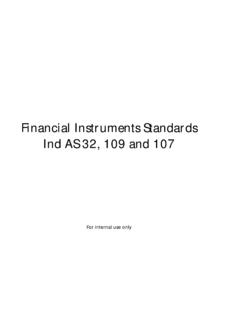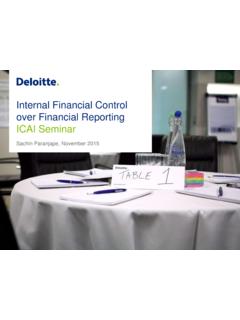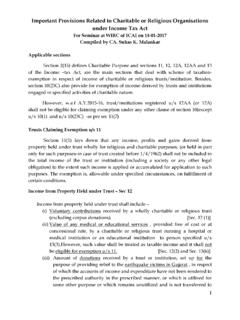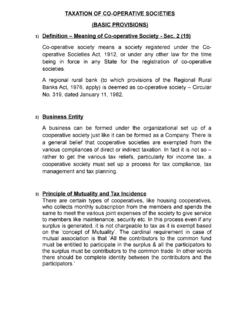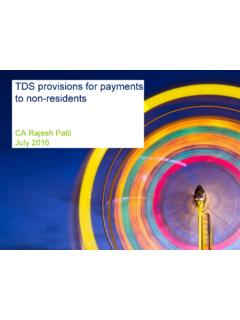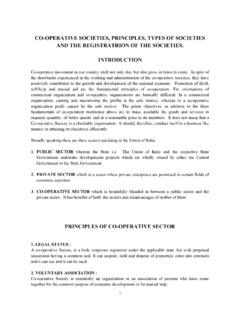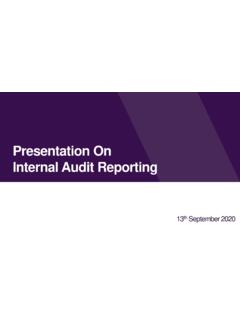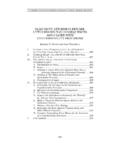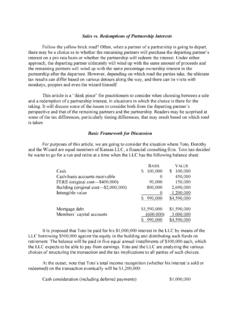Transcription of STAMP DUTY MPLICATIONS OF MERGERS AND …
1 STAMPDUTYIMPLICATIONS OFMERGERS ANDACQUISITIONSMr. Sanjay Buch,STAMPDUTYLAWININDIA- CONSITUTIONALPROVISIONS Entry 91 of List I of Schedule 7 ( Union List ) of the Indian Constitution of gives the power to the Union Legislature to prescribe the rates of STAMP duty in respect of- bills of exchange, cheques, cheques, promissory notes, bill of lading letters of credit, policies of insurance, transfer of shares debentures, proxies and receipts. Entry 63 of List II of Schedule 7( State List ) of the Constitution vests the power to prescribe the rates of duties on instruments other than those specified in the Union List in the state legislature.
2 All matters apart from the rates of STAMP duties in respect of both classes of instruments are the subject of Entry 44 of the List III of Schedule 7 ( Concurrent List ) of the Constitution. STAMPDUTYLAWININDIA-LEGISLATIVEPROVISION S Thus, the Indian STAMP Act, 1899 ( Main Act ) is in force in whole of India with respect to the rate of STAMP duties on instruments of commercial character and rates of duties on other instruments are subject to State states have added separate schedules to the Main Act.
3 Various states have added separate schedules to the Main Act. (For example- Delhi, Andhra Pradesh,Madhya Pradesh, Punjab ) Tamil Nadu, Assam and North Eastern States have made changes in the Schedule 1 of the Main Act. Gujarat, Maharashtra, Tamil Nadu, Karnataka and Rajasthan have enacted separate laws relating to STAMP duty. STAMPACT- FISCALSTATUTE In Hameed Joharan v. Abdul Salam,(2001) 7 SCC 573, the Supreme Court of India has held that- ..the Indian STAMP Act, 1899 (Act 2 of 1899) has been engrafted in the Statute Book to consolidate and amend the law relating to stamps.
4 Its applicability thus stands restricted to the scheme of the Act. It is a true fiscal statute in nature, as such strict construction is required fiscal statute in nature, as such strict construction is required to be effected and no liberal interpretation. It is a well-settled principle of statutory interpretation of a taxing statute that a subject will be liable to tax and will be entitled to exemption from tax according to the strict language of the taxing statute. The STAMP laws shall be construed strictly and if an instrument is not mentioned in the law, no STAMP duty is DUTY LEVIED ON INSTRUMENT The general principle with regard to STAMP duty is that duty has to be determined with reference to instrument and not to transaction.
5 In the case of Inland Revenue vs Angus [23 QBD 579] referred to and followed in Swadeshi Cotton mills Co, in Re, [AIR 1932 All 29] it was held that the first thing to be noticed is that the thing which is made liable to duty is an instrument. Section 2 (14) of the Main Act defines instrument as "Instrument" includes every document by which any right or liability is, or purports to be, created, transferred, limited, extended, extinguished or recorded; WHENDOES THELIABILITYTOPAYSTAMPDUTYARISE? The liability to pay STAMP Duty arises if the Instrumentis mentioned in the Schedule of the STAMP Act of theState in instrument is executed ; the instrument is executed outside the State, thenthe instrument relates to property situated in theState or relates to something which is done or has tobe done in the StateSTAMPDUTYASPECTS OFMERGERS ANDACQUISITIONS-STATUTORYPROVISIONSSTATU TORYPROVISIONS Maharashtra STAMP Act, 1958 Karnataka STAMP ActMAHARASHTRASTAMPACT, 1958 1.
6 Definition of Conveyance-section 2(g) of the Maharashtra STAMP Act, 1958 defines conveyance as- Conveyance includes,-(i) a conveyance on sale(ii) every instrument (iii) every decree or final order(iii) every decree or final order(iv) every order made by the High Court under section 394 of the Companies Act, 1956 in respect of amalgamation or reconstruction of companies : and every order made by the Reserve Bank of India under section 44A of the Banking Regulation Act, 1949 in respect of amalgamation or reconstruction of Banking which property, whether movable or immovable, or any estate or interest in any property is transferred to or vested in, any other person, inter vivos, and which is not otherise provided for by Schedule 1 Article Description of InstrumentProper STAMP Duty25(da)
7 Conveyance-On the true market value of the property which is the subjectmatter of conveyance- If relating to the order of High Court in respect of the amalgamation or reconstruction of companies under Section 394 of the Companies Act, 1956 or under the order of the Reserve Bank of India under section 44A of the Banking Regulation Act, 10% of the aggregate of the market value of the shares issued or allotted in exchange or otherwise and the amount paid for such that the amount of duty chargeable under this clause shall not exceed -(i) Amount equal to 5% of the true market value of the immovable property situated in Maharashtra of the transferor company.
8 Or(ii) Amount equal to of the aggregate market value of the shares issued or allotted and the amount of consideration of the Banking Regulation Act, 1949 allotted and the amount of consideration paid whichever is that in case of demerger or reconstruction the duty chargeable shall notexceed-(i) Amount equal to 5% of the true market value of the immovable property situated in Maharashtra transferred by the Demerged Company to the Resulting Company; or(ii) Amount equal to of the aggregate market value of the shares issued or allotted and the amount of consideration paid whichever is higherEXPLANATIONIII-ARTICLE25-CALCULATI ONOF THE MARKETVALUE OFSHARES For the purpose of Clause (da) the market value of shares,-(a)
9 In relation to the transferee company, whose shares are listed and quoted for trading on a stock exchange means the market value of shares on the appointed day mentioned in the Scheme of Amalgamation or when the appointed date is not fixed, the date of the order of the High Court,(b)In relation to the transferee company whose shares are not listed on the stock (b)In relation to the transferee company whose shares are not listed on the stock exchange, means the market value of the shares issued or allotted with reference to the market value of the shares of the transferor company or as determined by the Collector after giving the transferee company an opportunity of being heard.
10 (c)For the purposes of clause (da), the number of shares issued or allotted in exchange or otherwise shall mean, the number of shares of the transferor company accounted as per exchange ratio as on the appointed OFSHARES PURSUANT TOANAMALGAMATIONORA DEMERGER With the introduction of DEMAT mode under Depositaries Act, 1996 a new section 8A was incorporated in the Main Act granting exemption from payment of STAMP duty under certain circumstances. Section 8A of the Main Act inter-alia provides that notwithstanding anything contained in the ISA, an issuer, by the issue of securities to one or more Depositaries shall, in respect of such issue, be chargeable with duty on the total amount of securityissued by it and such shares / securities need not be stamped individually.
